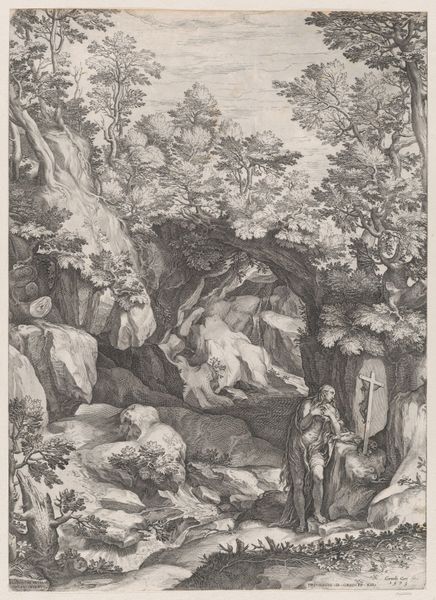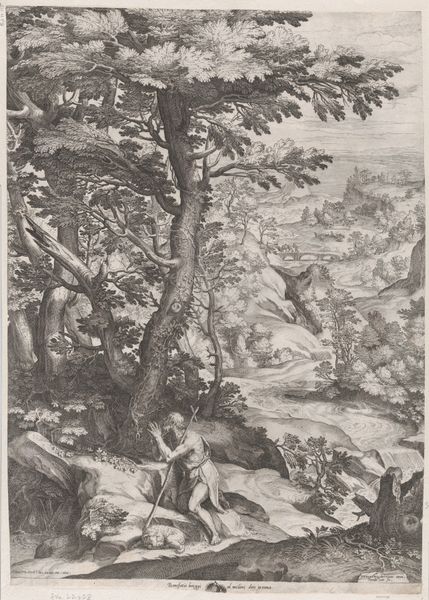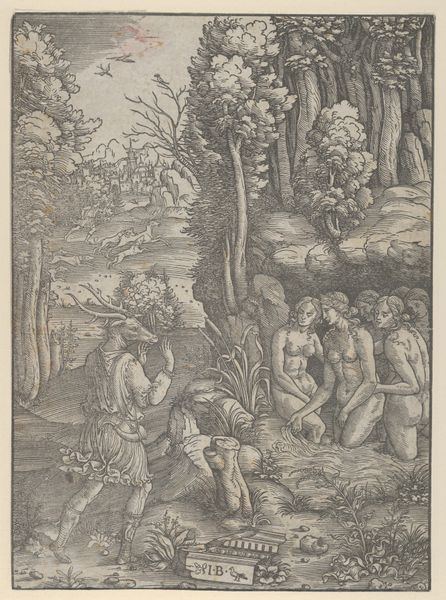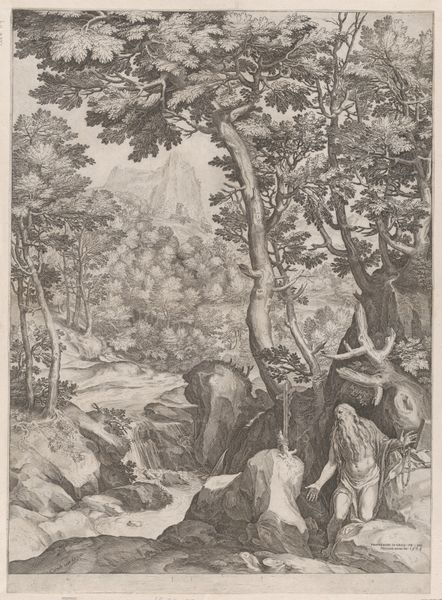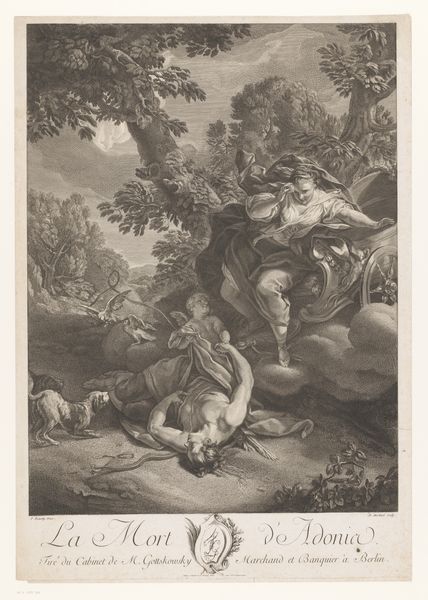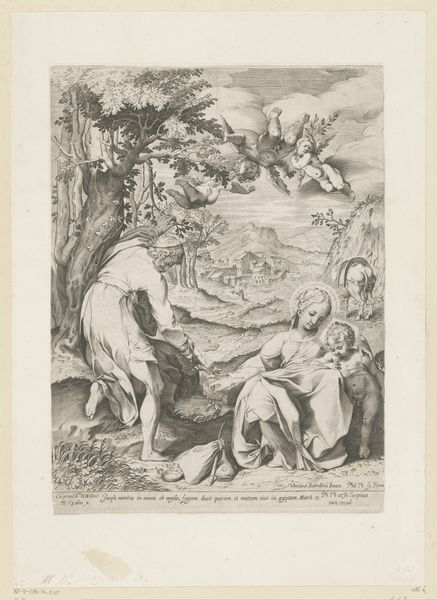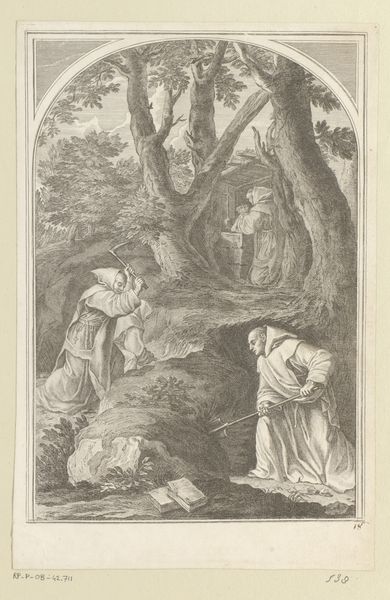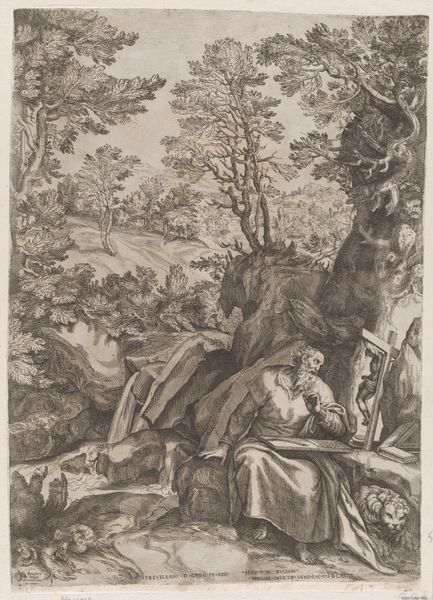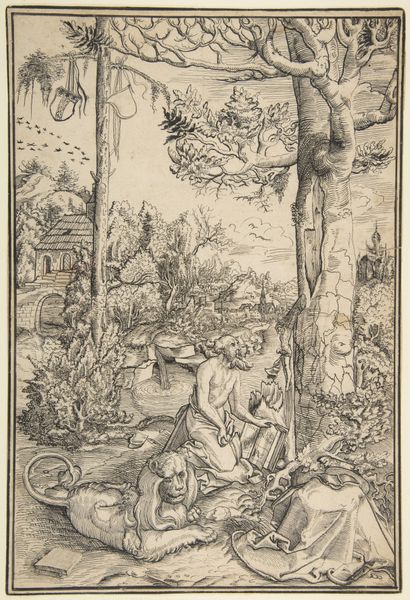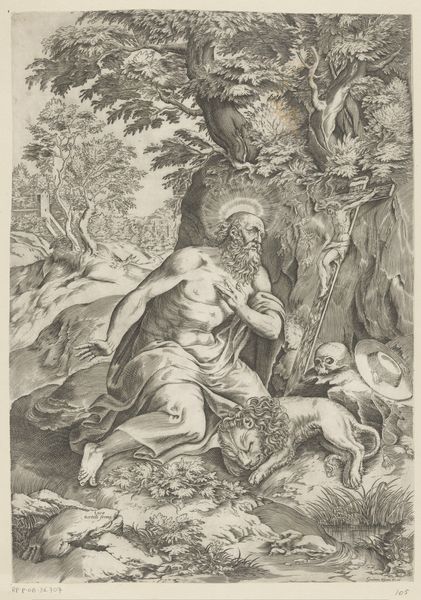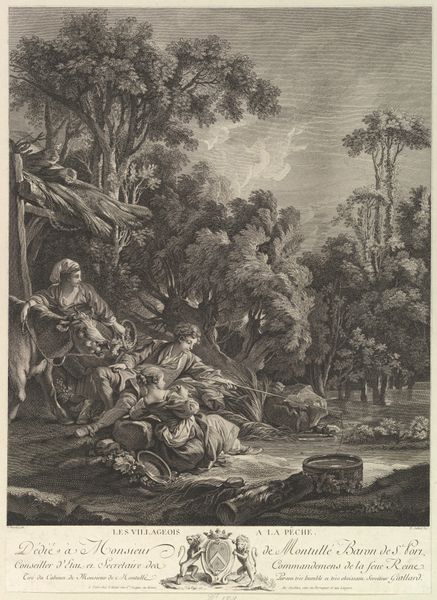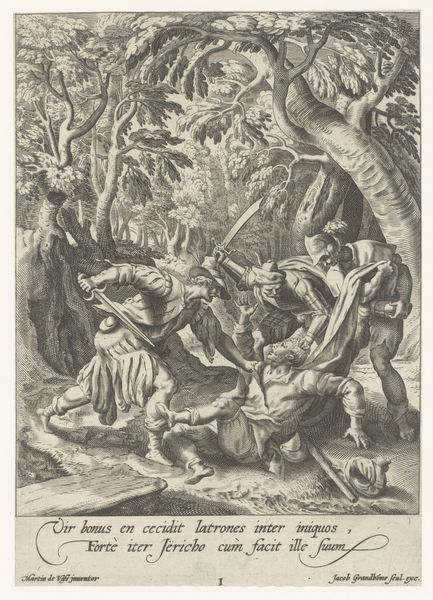
print, engraving
#
baroque
# print
#
landscape
#
figuration
#
line
#
history-painting
#
engraving
Dimensions: height 481 mm, width 343 mm
Copyright: Rijks Museum: Open Domain
This engraving of Saint Francis in the wilderness was made by Francesco Villamena in the early 17th century. The skull is a potent symbol in the image, representing mortality and the transient nature of earthly life, often found in depictions of saints in contemplation. This motif echoes through art history. Consider the vanitas paintings of the Dutch Golden Age, where skulls, decaying fruit, and extinguished candles remind us of life’s brevity. Even in ancient Roman art, skulls appeared in mosaics and frescoes, serving as memento mori, urging viewers to reflect on their own mortality. The presence of the skull taps into our collective subconscious, stirring emotions tied to our deepest fears and anxieties about death. It serves as a psychological mirror, forcing us to confront our own mortality and consider the spiritual implications of our existence, a powerful force engaging viewers on a deep, subconscious level. This symbol resurfaces, evolves, and takes on new meanings in different historical contexts.
Comments
No comments
Be the first to comment and join the conversation on the ultimate creative platform.

